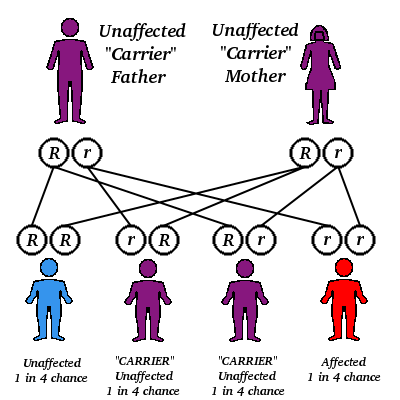Definition
Hemoglobin electrophoresis (also called Hgb electrophoresis), is a test that measures the different types of hemoglobin in the blood. The method used is called electrophoresis, a process that causes movement of particles in an electric field, resulting in formation of "bands" that separate toward one end or the other in the field.
Purpose
Hgb electrophoresis is performed when a disorder associated with abnormal hemoglobin (hemoglobinopathy) is suspected. The test is used primarily to diagnose diseases involving these abnormal forms of hemoglobin, such as sickle cell anemia and thalassemia.
Precautions
Blood transfusions within the previous 12 weeks may alter test results.
Description
Hemoglobin (Hgb) is comprised of many different types, the most common being A1, A2, F, S, and C.
Hgb A1 is the major component of hemoglobin in the normal red blood cell. Hgb A2 is a minor component of normal hemoglobin, comprising approximately 2-3% of the total.
Hgb F is the major hemoglobin component in the fetus, but usually exists only in minimal quantities in the normal adult. Levels of Hgb F greater than 2% in patients over three years of age are considered abnormal.
Hgb S is an abnormal form of hemoglobin associated with the disease of sickle cell anemia, which occurs predominantly in African-Americans. A distinguishing characteristic of sickle cell disease is the crescent-shaped red blood cell. Because the survival rate of this type of cell is limited, patients with sickle cell disease also have anemia.
Hgb C is another hemoglobin variant found in African Americans. Red blood cells containing Hgb C have a decreased life span and are more readily destroyed than normal red blood cells, resulting in mild to severe hemolytic anemia.
Each of the major hemoglobin types has an electrical charge of a different degree, so the most useful method for separating and measuring normal and abnormal hemoglobins is electrophoresis. This process involves subjecting hemoglobin components from dissolved red blood cells to an electric field. The components then move away from each other at different rates, and when separated form a series of distinctly pigmented bands. The bands are then compared with those of a normal sample. Each band can be further assessed as a percentage of the total hemoglobin, thus indicating the severity of any abnormality.
Preparation
This test requires a blood sample. No special preparation is needed before the test.
Risks
Risks for this test are minimal, but may include slight bleeding from the blood-drawing site, fainting or feeling lightheaded after venipuncture, or hematoma (blood accumulating under the puncture site).
Normal results
Normal reference values can vary by laboratory, but are generally within the following ranges.
Adults:
- Hgb A1: 95-98%
- Hgb A2: 2-3%
- Hgb F: 0.8-2.0%
- Hgb S: 0%
- Hgb C: 0%.
Child (Hgb F):
- 6 months: 8%
- Greater than 6 months: 1-2%
- Newborn (Hgb F): 50-80%.
Abnormal results
Abnormal reference values can vary by laboratory, but when they appear within these ranges, results are usually associated with the conditions that follow in parentheses.
Hgb A2:
- 4-5.8% (β-thalassemia minor)
- Under 2% (Hgb H disease).
Hgb F:
- 2-5% (β-thalassemia minor)
- 10-90% (β-thalassemia major)
- 5-35% (Heterozygous hereditary persistence of fetal hemoglobin, or HPFH)
- 100% (Homozygous HPFH)
- 15% (Homozygous Hgb S).
Homozygous Hgb S:
- 70-98% (Sickle cell disease).
Homozygous Hgb C:
Key Terms
- Hemoglobin C disease
- A disease of abnormal hemoglobin, occurring in 2-3% of African-Americans. Only those who have two genes for the disease develop anemia, which varies in severity. Symptoms include episodes of abdominal and joint pain, an enlarged spleen and mild jaundice.
- Hemoglobin H disease
- A thalassemia-like syndrome causing moderate anemia and red blood cell abnormalities.
- Heterozygous
- Two different genes controlling a specified inherited trait.
- Homozygous
- Identical genes controlling a specified inherited trait.
- Thalassemias
- The name for a group of inherited disorders resulting from an imbalance in the production of one of the four chains of amino acids that make up hemoglobin. Thalassemias are categorized according to the amino acid chain affected. The two main types are alpha-thalassemia and beta-thalassemia. The disorders are further characterized by the presence of one defective gene (thalassemia minor) or two defective genes (thalassemia major). Symptoms vary, but include anemia, jaundice, skin ulcers, gallstones, and an enlarged spleen.
Further Reading
For Your Information
Books
- Cahill, Mathew. Handbook of Diagnostic Tests. Springhouse, PA: Springhouse Corporation, 1995.
- Jacobs, David S. Laboratory Test Handbook, 4th ed. Hudson, OH: Lexi-Comp Inc., 1996.
- Pagana, Kathleen Deska. Mosby's Manual of Diagnostic and Laboratory Tests. St. Louis: Mosby, Inc., 1998.
Gale Encyclopedia of Medicine. Gale Research, 1999.



